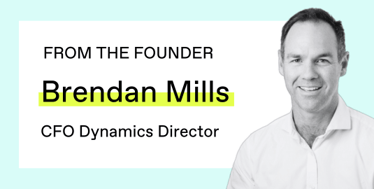How Rising Interest Rates Impact Your Business
Interest Rates and Your Business
Rising interest rates are a thorn in the side of many business owners. With debt becoming costlier to service, the pressure on businesses is palpable.
But managing debt amidst rising interest rates is possible. By understanding your interest cover and breakeven points, you'll be better equipped to make solid financial decisions and steer your business towards stability and growth.
In this article:
→ What factors should be considered when it comes to rising interest rates?
→ Why are interest rates important for businesses?
→ What rising interest rates mean for your business
→ How interest rates impact your interest cover
→ EBITDA versus interest cover
→ How interest rates impact your debt position
→ The KPI benchmark to aim for between breakeven and sales
→ How to turn rising interest rates into an opportunity
In Short
What factors should be considered when it comes to rising interest rates?
The two key considerations are your interest cover and the debt position of your breakeven.
Why are interest rates important for businesses?
Interest rates determine how much it costs to borrow money from banks, such as for a mortgage or business loan.
Interest rates impact debt servicing costs, influencing profitability and financial stability.
Understanding interest cover and breakeven points are essential for making informed financial decisions.
What Rising Interest Rates Mean For Your Business

“With headlines out there at the moment, like the Wall Street Journal saying small businesses are slamming on the brakes because interest rates are going up, what does that actually mean to you as a business owner?
Well, there's two factors you need to consider when looking at your debt.
How rising interest rates impact your interest cover
The first thing is what we call interest cover. How many times does the profitability of your business cover the interest expense of the business?

EBITDA versus interest cover
For example, if you've got an EBITDA – so earnings before interest tax, depreciation and amortisation – what is that number relative to your interest and finance cost of your business?

If you've got an EBITDA of $50,000 a month and an interest cost of $5,000 a month, then you've got a cover of 10 times. That's a pretty safe place to be, as long as you can retain the consistency of the $50,000. So that's question number one: Should you be pumping the brakes relative to your interest cover?
When does the bank get nervous? Well, it's really a personal thing as far, as I'm concerned. Your bank will have particular restrictions around what EBITDA versus interest cover it needs to have. And it might be a coverage of four, or it might be a coverage of three, where your profitability needs to be three times greater than what your interest expense is. That will depend on your situation and your contract.
But I'm asking you as a business owner, what makes you feel comfortable and what makes you feel uncomfortable when looking at those numbers?
How interest rates impact your debt position
The second element is what is the underlying impact on the debt position of your breakeven?
Those debt repayments become part of your breakeven. They need to be factored into that calculation. And if the interest rates are going up, your loan repayments are going up at the same time. How does that impact your breakeven as a business?
The KPI benchmark to aim for between breakeven and sales
As we say, at a minimum, we strive for a 50% gap between what our breakeven is and what our actual sales are. For example, if my monthly breakeven is $300,000, you should be striving for monthly sales of $450,000 at least.
Your contribution margin will be a big dictator as to how big that gap needs to be. But let's say for simplicity in this video, we're aiming for 50% gap as a minimum.
How does your interest expense and your interest coverage compare? And what does your actual sales versus your breakeven?
How to turn rising interest rates into an opportunity
But remember, during times of challenges in the economy, that's when great investments are often made - because people are fearful.
What are the deals that can be created? What are the bargains you can potentially buy that can catapult your business over the next five, 10 years?
At the same time, being respectful of interest cover and your breakeven of your business, so you're not risking the farm so to speak.
Learn everything we teach our clients... for free
Join 400+ business owners & leaders who receive practical business & accounting tips, delivered free to your inbox every week. No fluff, just high-level expertise. Sign up now.



